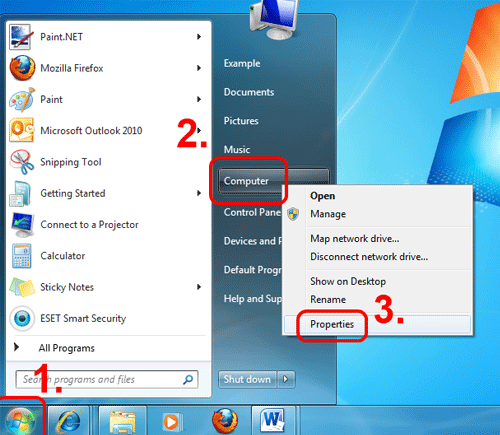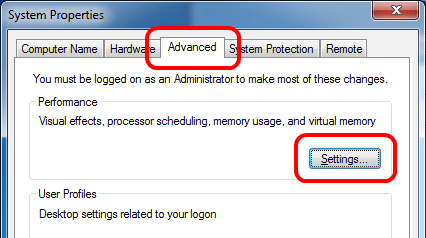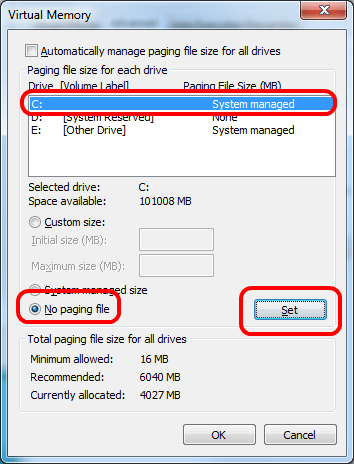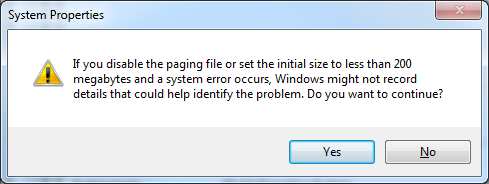How to save space on Solid State Drives (SSDs) in Windows 7 - Part 1
Description: This is a technical article on the topic of saving space on Solid State Drives in Windows 7. Part One covers moving the Paging File.
The purpose of this article series is to show how to save space on Solid State drives, which are typically smaller than standard hard drives. In this article we will use a secondary hard drive, presumed to be larger than the solid state drive, as sort of a repository, so we may move files from the faster SSD drive to the bigger standard hard drive.
Paging File
The first, easiest and biggest file to be moved is the paging file. The paging file is a "backup" for the RAM in your computer, so it is a large, mostly empty file that simply waits for Windows to input information to it. We will be moving this from the C:\ drive (SSD) to the E:\ drive (HDD). This configuration may differ per system, so make sure the drive letters are right with your system.
- Go to Start, right-click Computer and choose Properties.

- On the new window, choose Advanced System Settings on the left. Note: Approve or allow any permissions dialogues.

- On the new window, choose the Advanced tab, then in the Performance section click on Settings.

- On the newest window, choose the Advanced tab again, then choose Change.

- Uncheck the Automatically manage paging file size for all drives box at the top.

- Select the secondary drive (E:\ in this case,) choose System managed size, then click Set.

- Select the C:\ drive, choose No Paging File, then click Set.

- When prompted, choose Yes to allow the change to go through. Don't worry, although Windows doesn't recognize it yet, the new paging file will take all the information Windows needs.

- Click OK to proceed through the windows. If prompted to restart, choose the option to Restart Now. If not, go ahead and restart your computer to complete the process.
This article is part 1 of a 6 part series.
Part 2 of this set, Disabling Hibernation, can be found here.
Part 3 of this set, System Restore, can be found here.
Part 4 of this set, Indexing Files, can be found here.
Part 5 of this set, User Directory Location, can be found here.
Part 6 of this set, Program Directory Location, can be found here.
Free technical support is available for your desktops, laptops, printers, software usage and more, via our new community forum, where our tech support staff, or the Micro Center Community will be happy to answer your questions online.
Ask questions and get answers from our technical support team or our community.
PC Builds
Help in Choosing Parts
Troubleshooting

